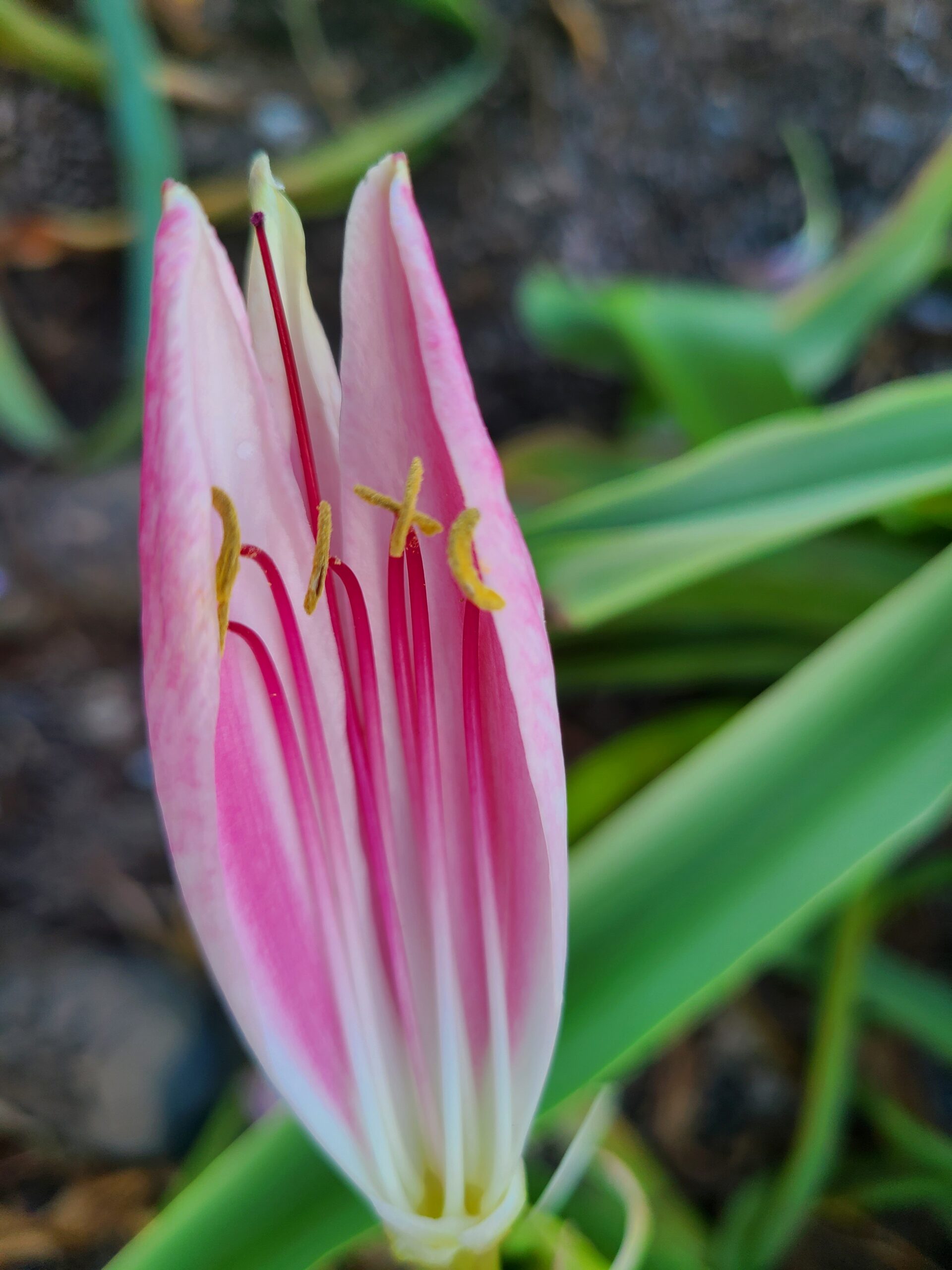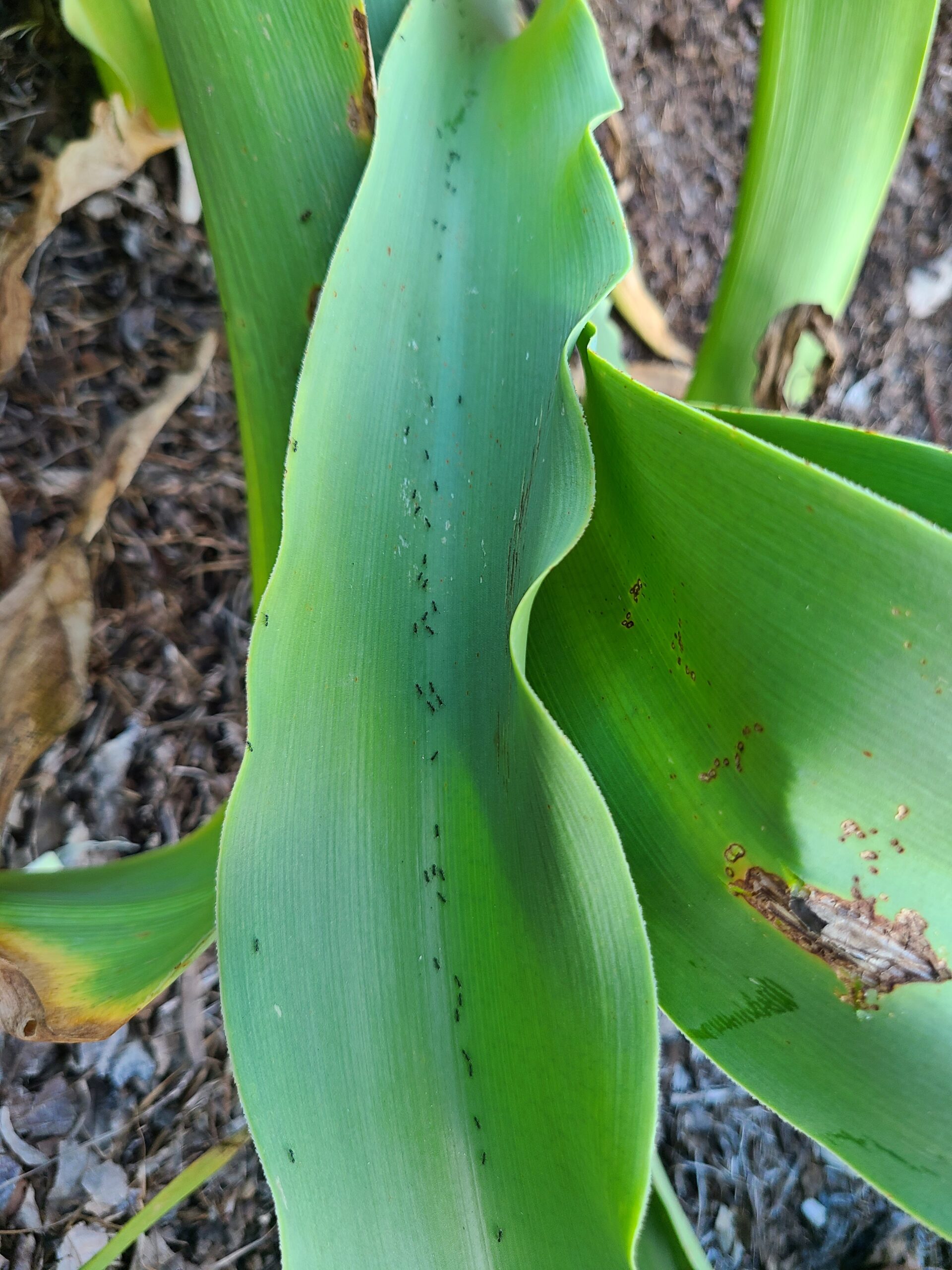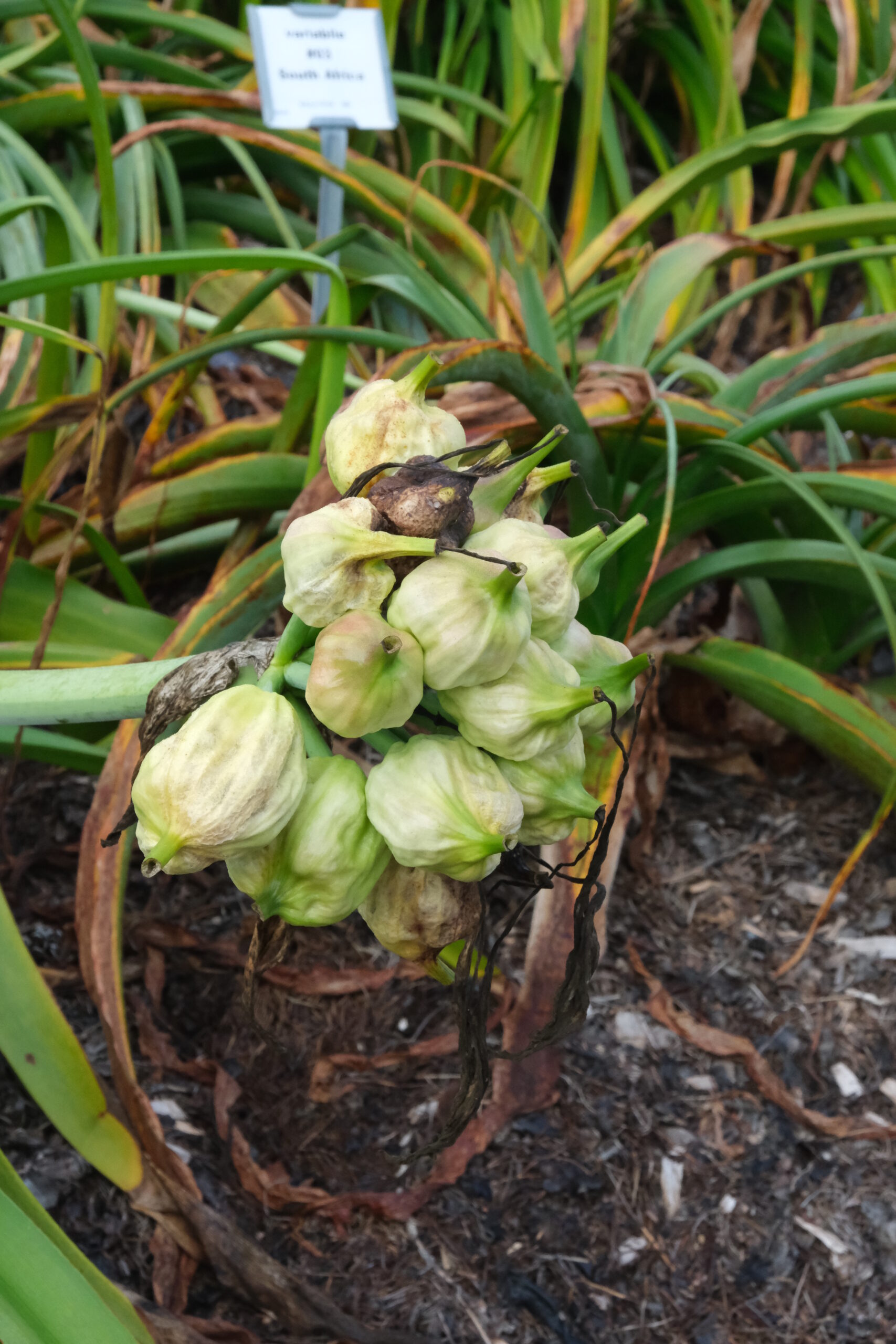Plant breeders are an odd sort…people who are never satisfied with their results, and as such are always looking to improve even the most fabulous creation. We’ve been dabbling with crinum lilies for several years, and the first photo below is one of our newest creations, Crinum ‘Razzleberry’, which is rather amazing. Despite this success, we return to the breeding fields to see what else awaits from additional gene mixing.

Crinum flowers typically open in early evening…5-7pm for us. The first step in breeding is to remove the petals, to have good access to the male pollen (the powdery tips atop the six pink thingys), and the female pistil, the single longer thingy with a dark pink knob at the top and a bigger knob at the bottom. Most crinum pollen is yellow, but depending on the parentage, some hybrids have white pollen.


The male thingy is known as a stamen, comprised two parts, the filament (the pink thing), and the anther (the part with the pollen). The female parts are known as the pistil, comprised of the ovary (bottom), the style (the pink thingy), and the stigma (the sticky knob at the tip.
In breeding, the anther is removed and the pollen is dusted on the stigma of a different plant to make the cross. Crinums produce an insane amount of nectar, so crinum breeders are constantly dodging sphinx moth pollinators, as well as dealing with the ant superhighway below as they haul off the nectar.

If your cross is successful, you will have seed forming in about a month. The seed are quite large, and must be planted immediately, since they have zero shelf life.

Once the seeds germinate it normally takes 4-5 years for your new seedlings to bloom. During the first several years you can evaluate vigor and growth habit, but the final evaluation can’t be made until it blooms.


So Interesting! But what if a Sphinx Moth pollinates after you? Can you be assured of the exact parents of the hybrid?
We remove the anthers and petals to make sure that doesn’t happen.
It’s nice that you don’t have to cover the stigma to protect it from other nectar seekers. Maybe I’ll try my hand at that if I can get “Little Stinker” to bloom! He and “Queen Emma” would be quite a match! Let you know 5 years from now how it went.